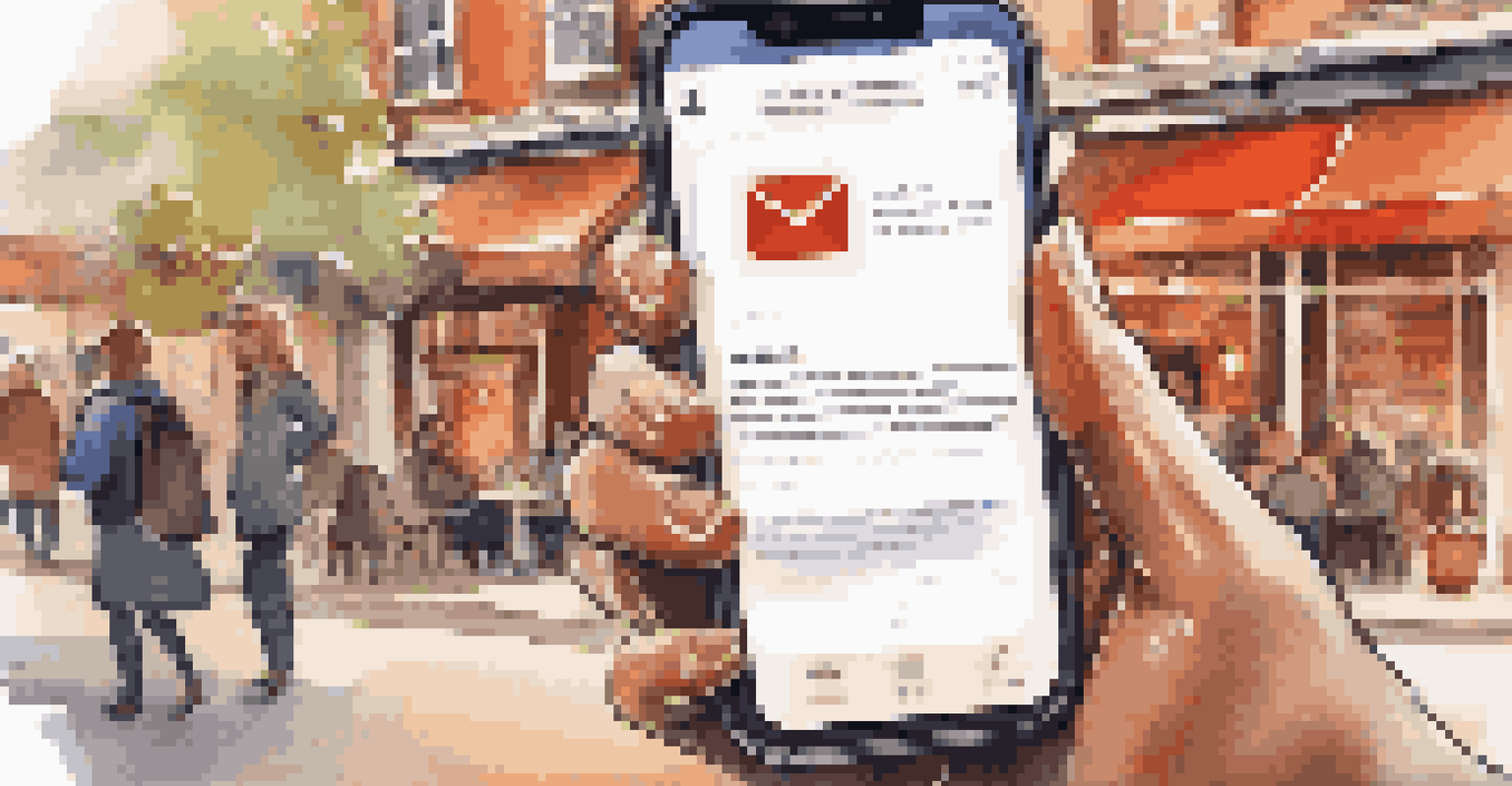The Role of Follow-Up Emails in Virtual Networking

Understanding the Importance of Follow-Up Emails
Follow-up emails are often the unsung heroes of virtual networking. After meeting someone online, it's easy to forget about the connection without a friendly reminder. A well-timed follow-up can solidify that initial rapport and keep the conversation going.
The fortune is in the follow-up.
These emails serve as a bridge between your first interaction and future opportunities. They show that you value the connection, which can be a game-changer in a digital world where relationships can feel fleeting. A simple follow-up can transform a casual meeting into a lasting professional relationship.
Ultimately, follow-up emails help you stand out in a sea of digital interactions. They are your chance to reiterate your interest, share additional information, or propose the next steps, ensuring you remain top-of-mind for the person you just met.
When to Send Follow-Up Emails
Timing is everything when it comes to follow-up emails. Ideally, you should reach out within 24 to 48 hours after your initial interaction. This timeframe keeps the conversation fresh in both parties' minds and demonstrates your enthusiasm.

However, the nature of your interaction can also dictate timing. For instance, if you attended a virtual conference and made several connections, a follow-up could be sent a day after the event to maintain momentum. Tailoring your timing to the context of your interaction enhances your chances of a response.
The Power of Follow-Up Emails
Follow-up emails solidify connections and keep conversations alive in a digital landscape.
In some cases, it might be appropriate to wait a week or two, especially if the connection was brief or casual. The key is to strike a balance between being persistent and respectful of the other person's time.
Crafting a Compelling Subject Line
The subject line of your follow-up email is your first impression, so make it count! A compelling subject line should be concise yet intriguing enough to encourage the recipient to open it. Consider using phrases like 'Great to Connect!' or 'Following Up on Our Conversation' to spark interest.
Networking is not about just connecting people. It's about connecting people with people, people with ideas, and people with opportunities.
Avoid generic subject lines that could easily be overlooked. Personalizing the subject line by including the person's name or referencing your discussion can make your email stand out. This small detail shows you care about the connection and are genuinely interested in continuing the conversation.
Remember, your subject line sets the tone for the entire email. A catchy and relevant subject can lead to higher open rates and ultimately pave the way for a fruitful interaction.
Personalizing Your Follow-Up Email
Personalization is key when it comes to follow-up emails. Instead of sending a generic message, take a moment to reflect on your interaction and incorporate specific details. Mentioning a shared interest or a topic you discussed can make your email feel tailored and thoughtful.
For instance, if you talked about a recent project, referencing it in your follow-up can remind the recipient of your conversation. This personal touch not only reinforces your connection but also shows that you were engaged during your initial meeting.
Timing Matters for Follow-Ups
Sending follow-up emails within 24 to 48 hours maximizes engagement and demonstrates enthusiasm.
Additionally, personalized emails tend to receive higher response rates. People appreciate when you take the time to acknowledge their interests or concerns, making them more likely to engage in further discussions.
Adding Value in Your Follow-Up
Adding value in your follow-up email can significantly enhance your networking efforts. Rather than simply reiterating your interest, consider sharing a resource, article, or insight related to your previous conversation. This demonstrates your willingness to contribute and enrich the connection.
For example, if you both discussed industry trends, providing a recent report or a relevant blog post can spark further dialogue. This not only shows your expertise but also positions you as a valuable contact in their network.
By focusing on how you can add value, you shift the conversation from a mere follow-up to a meaningful exchange of ideas. This approach can lead to deeper connections and more fruitful networking opportunities.
The Role of Gratitude in Follow-Up Emails
Expressing gratitude in your follow-up email can leave a lasting impression. A simple 'thank you' for the person's time or insights can go a long way in fostering goodwill. It shows that you appreciate their effort and reinforces a positive tone in your communication.
Gratitude not only strengthens your relationship but also cultivates a sense of reciprocity. When you acknowledge someone's help or valuable input, they're more likely to feel inclined to assist you in return, whether through advice, resources, or introductions.
Personalization Enhances Engagement
Incorporating specific details and gratitude in your emails makes them more memorable and fosters deeper connections.
Incorporating gratitude into your follow-up emails makes your communication more genuine and relatable. It transforms a transactional interaction into a more human connection, paving the way for future collaborations.
Following Up Without Being Pushy
One of the biggest challenges in virtual networking is finding the right balance between being persistent and respectful. While it's important to follow up, you don’t want to come across as pushy. The key is to approach your follow-up with a friendly, casual tone that invites conversation rather than demands a response.
If you haven't received a reply after your initial follow-up, consider waiting a week or two before reaching out again. In your subsequent email, you can lightly reference your previous message and express your continued interest without sounding overly eager.

Remember, building a relationship takes time, and patience is crucial. By being respectful of the other person's time and space, you cultivate a more positive networking experience for both parties.
Measuring the Success of Your Follow-Up Emails
Evaluating the effectiveness of your follow-up emails is essential for refining your networking strategy. Track responses and engagement levels to determine what resonates with your connections. Are people replying to your emails? Are they initiating further conversations? These metrics can provide valuable insights.
Additionally, consider setting goals for your follow-up emails, such as the number of responses you hope to receive or connections you aim to strengthen. This can help you stay focused and motivated in your virtual networking efforts.
Lastly, don’t hesitate to ask for feedback from your connections. If you receive a response, inquire about their thoughts on your email or how you can improve your outreach. This proactive approach can help you continually enhance your follow-up strategy.